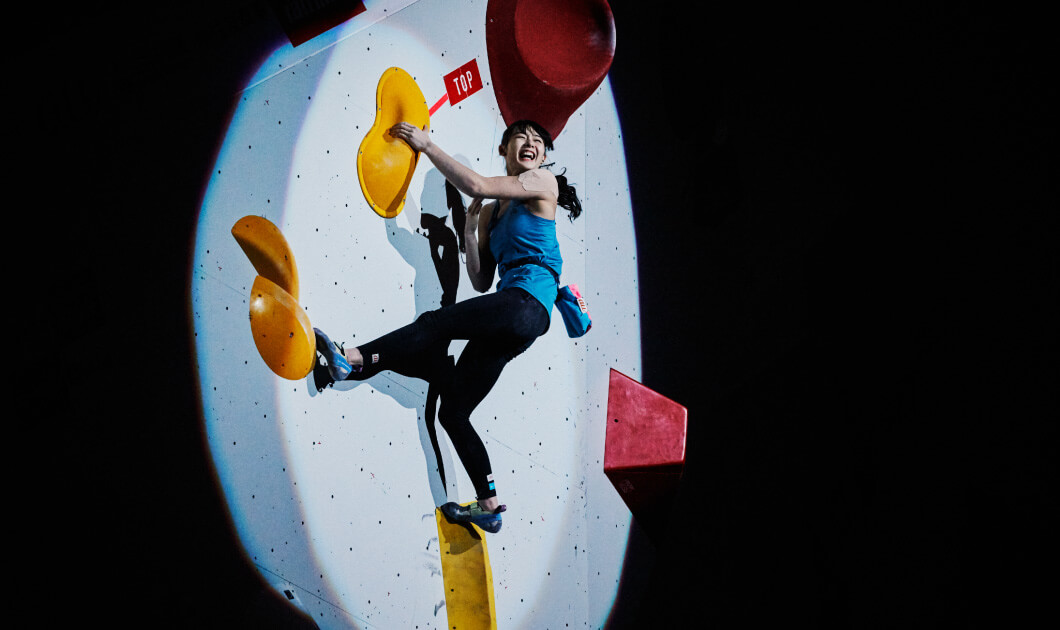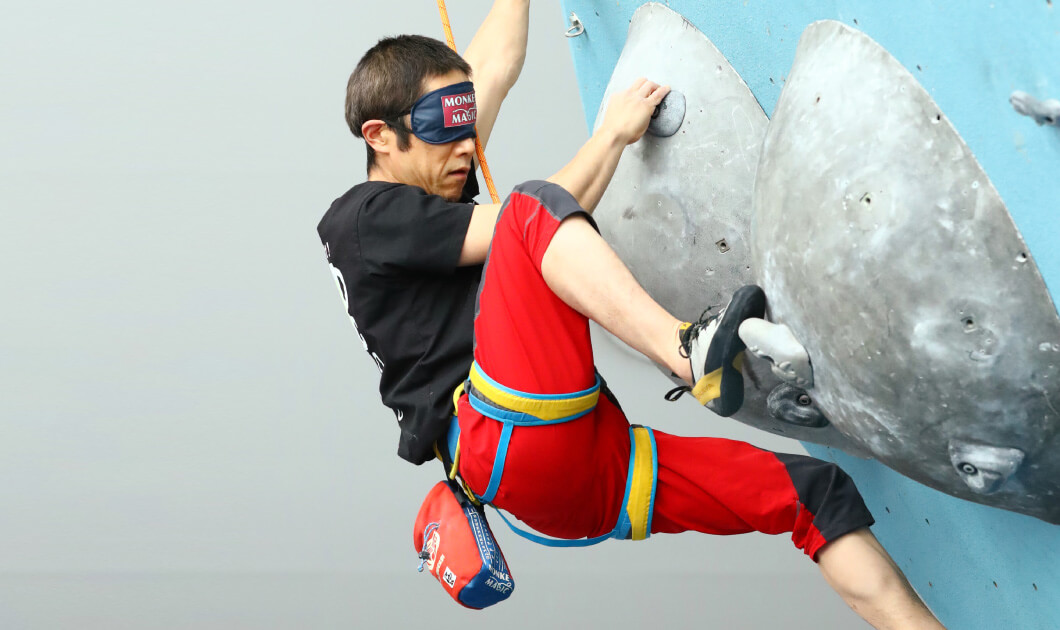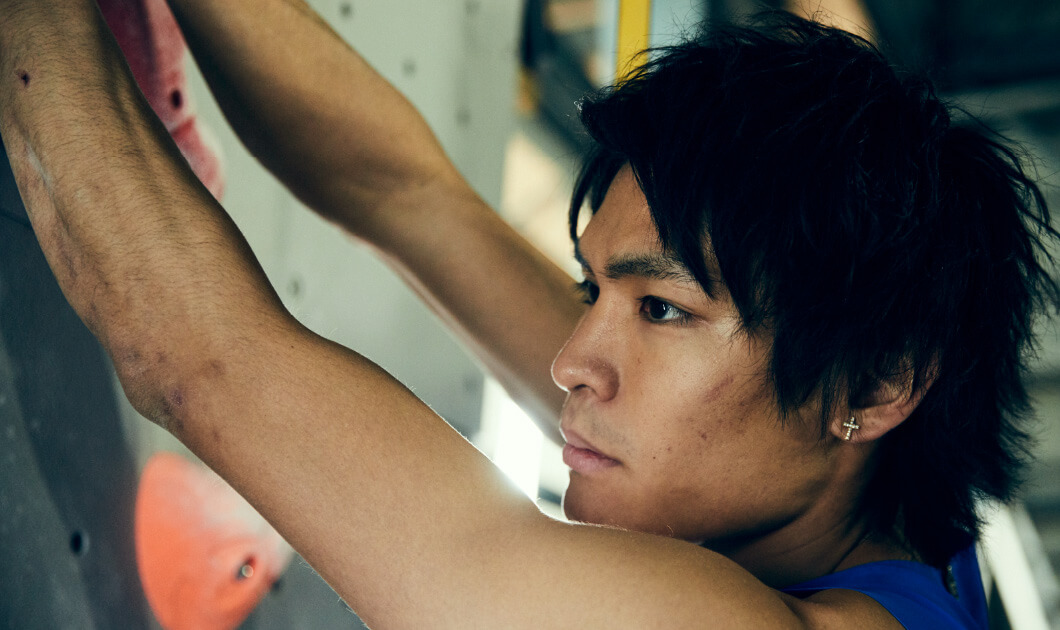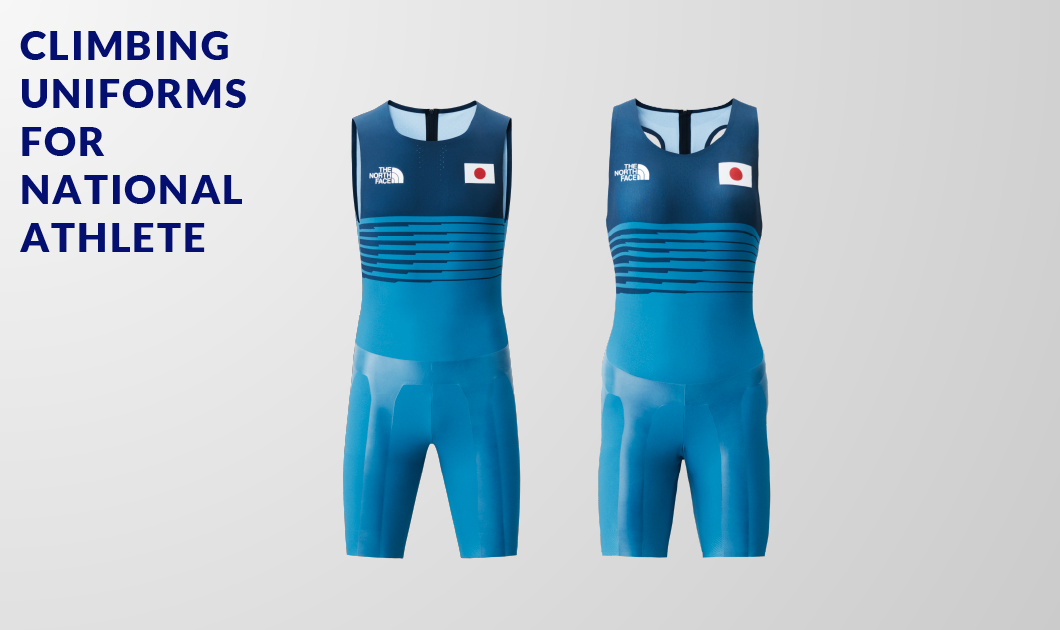With the evolution of climbing, sport climbing emerged as a sport-oriented discipline. It is said to have originated in the former Soviet Union around 1950, and the first international competition took place in 1989—its history is still young. One significant characteristic of sport climbing is that the targets of the climb are not found in nature, but they are artificial walls. Using holds placed on the walls to grab or step on, climbers use their bare hands to climb. There are three disciplines: “Speed,” in which two athletes climb one-on-one and compete for the faster time; “Bouldering,” in which climbers compete the number of completed routes; and “Lead,” where the competition is in who can climb the highest. Incidentally, many Japanese athletes excel at bouldering.
On “Combined”: the combined format of the three disciplines
Currently, most international competitions are held according to the disciplines, but there is a scoring method that combines two or all three disciplines. As of September 2021, recent major competitions have been utilizing this “Combined” method, in which the rankings of the three disciplines are multiplied—the idea being that the smaller the product, the higher the rank. For example, if a competitor is ranked 5th in all three disciplines, the score would be 5×5×5=125 points. If another is ranked 1st in one discipline and 11th in the remaining two, it would be 1×11×11= 121 points, giving the latter a higher placement. If instead the scores are added, the former would be 5+5+5=15, and the latter would be 1+11+11=23, meaning the former would rank higher than the latter, and rankings will be reversed. In other words, the multiplication method is more advantageous for a competitor who has one outstanding discipline that he or she can aim to win, than for a competitor to have evenly balanced results across three. The rules for sport climbing are set by the International Federation of Sport Climbing (IFSC). Let's now take a look at some numbers that are essential to enjoying the game.





























